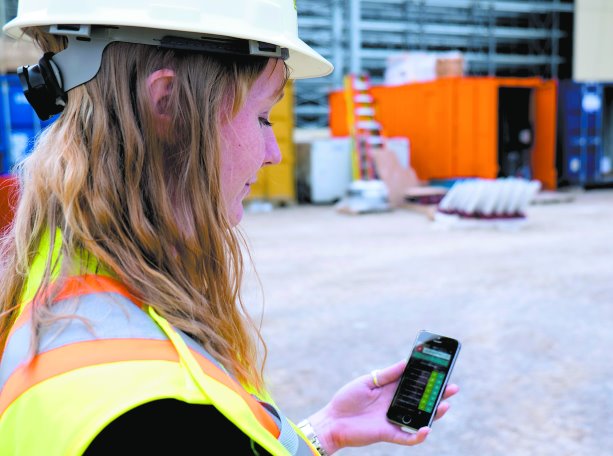Using the deficiency management software Closeout by Bridgit dramatically changed McKay-Cocker’s turnaround time for dealing with deficiencies on its recent build of the Dr. Oetker Pizza Manufacturing Plant in London, Ont.
"It improved the whole process," said McKay-Cocker site superintendent Adam Latta.
"When you use it, it’s an instantaneous email to the subcontractor. Sometimes we were recording deficiencies in the morning and that trade was onsite by the afternoon, rectifying the problems."
Closeout is a cloud-based communications platform that aims to tackle the issue of deficiency management on construction sites. Through a smartphone application, photos of deficiencies can be taken and sent directly to the responsible subcontractor. The technology allows for real-time notifications and subcontractors are integrated via email.
"It was easy to adapt to and turn it into one of our daily uses. It wasn’t a hindrance; it was just an added tool that we had for a higher quality outcome," said Latta.
"It’s definitely a way to even curb the trend before the problem exacerbates. You can catch the deficiency immediately as the work is being done. We were using it as more of a quality control even at the same time as well as a deficiency."
Traditionally, deficiencies are addressed at the end of a project, but Closeout allows deficiencies to be tracked in real time.
"It’s really great to see a whole turnaround in terms of how people view this process and how people want to approach these problems going from very last minute approach to a very proactive approach," said Bridgit co-founder Lauren Hasegawa.
McKay-Cocker used the software to close-out the pizza plant, becoming the first project to officially close-out using Bridgit’s software.
McKay-Cocker was one of the original beta testers of the software and has used it throughout development and its official launch in March of this year.
"We were actually able to see some of the items that we had suggested come through further into the process and be developed into useful parts of the application for us, which was great. That increased their interest — it was accomplishing what they needed it to accomplish for them," said McKay-Cocker project coordinator Sandra Feenstra.
Everything in Closeout is there because of customer feedback.
When Closeout was first designed, the developers did not think the client would be involved with the technology. McKay-Cocker decided to include the client as a participant as a way of tracking the deficiencies.
"That led us to create an actual owner/client user ability so that people can actually add those people with certain permission settings. Then we were able to see how the architects fit in, which allowed us to start building a specific architects platform as well," explained Hasegawa.
On the Dr. Oetker project, there were consultants based in Toronto who only had the opportunity to visit the job site every two weeks and the application helped maintain their oversight.
"At any time they like, they can log into the web application and look through and see what deficiencies are logged and see where they are as far as process, if they’ve been resolved, if there are any outstanding issues, and monitor the timelines as well. They feel more involved in the process," explained Feenstra.
Many people hold the view that the construction industry is too set in its ways to adapt to new technologies, such as Closeout, but the McKay-Cocker team received buy-in from its workers, even those who are not the most tech-savvy.
Feenstra said using the technology was almost immediate with very little training required.
"We have a 50-year-old superintendent who could use it within two minutes of training. It’s adaptable and usable by any party and very user friendly even for someone who isn’t very tech savvy," she said.
McKay-Cocker will continue to use the software on future projects.
"Simply from a labour cost perspective, what we would have spent probably 30 hours on in tracking and the various manual aspects of deficiencies, we can now do in three hours. Our subcontractors get those reminders on a weekly basis without us having to do that," said Feenstra.
She said it is also helpful in the staging of subcontractors. For instance, if the drywaller needs to come back to do a patch, the software will automatically send a notification to the painter after the drywaller is confirmed.
"It takes it off your plate and basically manages both items for you. It keeps the deficiency being corrected in the correct steps. You’re not asking the painter to come out before it’s ready for him."
Bridgit is currently developing white papers that measure how much money people are saving by using the software and how much time is being saved in terms of reporting deficiencies.
Latta expects that more construction companies will begin adopting the technology.
"Once they see the positive outcome that we did have with it, it’s definitely something to at least start looking into as technology starts to increase in the construction industry."
Follow Kelly Lapointe on Twitter @DCNKelly.










Recent Comments
comments for this post are closed